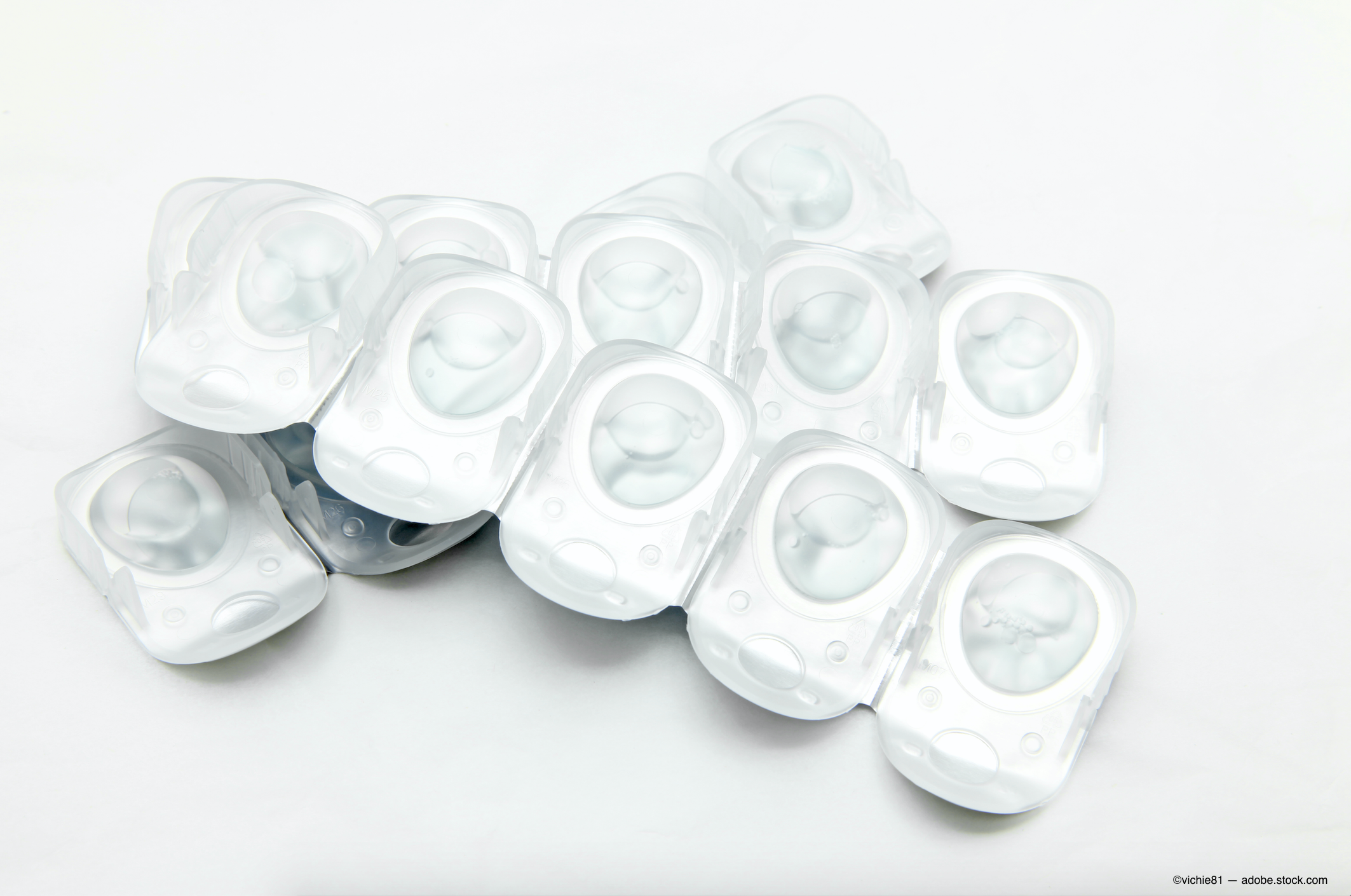Silicone hydrogel daily disposable lenses match hydrogel for comfort
When it comes to daily disposable (DD) contact lenses, a silicone hydrogel (SH) product can be just as comfortable as a hydrogel (H) lens. Practitioners should be confident in explaining material/brand benefits to their patients without being concerned that a recommended lens is more expensive than another.

When it comes to daily disposable (DD) contact lenses, a silicone hydrogel (SH) product can be just as comfortable as a hydrogel (H) lens, according to the results of a randomized, double-masked study conducted by researchers from the University of Waterloo, Ontario, Canada.
Study summary
The study enrolled 120 subjects who wore a SH-DD lens (somofilcon A; clariti 1 day, CooperVision) in one eye and an H-DD lens (etafilicon A; 1-Day Acuvue Moist, Johnson & Johnson Vision) contralaterally for a total of 8 hours. Half of the subjects were habitual H-DD wearers, and the remaining study participants were wearers of various SH and H frequent replacement lenses.
Patients were asked to rate lens comfort at application and hourly during wear, and they were also asked to identify their preferred lens based on comfort at application and end of study.
Analyses of the data were performed for the entire population and separately for the habitual H-DD and habitual frequent replacement subgroups. Except at a single timepoint in an analysis of data from the entire population, there were no statistically significant differences in ratings of lens comfort or lens preference.
The SH-DD and H-DD lenses used in the study had similar water content (56 percent and 57 percent, respectively). The SH-DD lens had a higher modulus than the H-DD lens (0.50MPa vs. 0.29MPa).
Study participants used a 0-100 integer scale to rate comfort in which a score of 100 indicated the greatest comfort (“cannot be felt”). Although ratings for comfort with both lenses decreased by a statistically significant amount over the 8-hour wearing period, the mean scores were high at application (>85) and remained high (>80) even at the end of the study.
Practitioner understanding
“While practitioners appear to understand that SH has physiological benefits compared with a hydrogel material, there is evidence that they consider the benefits of a silicone hydrogel material for their frequent replacement lens wearers far more than for their patients in daily disposable lenses,” says Jill Woods, clinical scientist at the Centre for Ocular Research & Education (CORE) at the School of Optometry & Vision Science at the University of Waterloo.
“At the same time, there appears to be a preference among practitioners to prescribe hydrogel DD lenses over SH products based on the thought that the material properties of the silicone hydrogel lenses make them less comfortable,” she says.
“Many new DD lens wearers may begin wearing their lenses just two to three short days a week, but typically they increase to full time wear,” she says. “Full-time DD lens wearers deserve the best material options available, and that would be with a silicone hydrogel lens that permits greater oxygen flow to the cornea.”
Optimizing success
To keep DD lens wearers comfortable, practitioners should pay attention to assessing the quality and quantity of the tear layer and evaluating symptoms, according to Ms. Woods.
“The Ocular Surface Disease Index (OSDI) and Contact Lens Dry Eye Questionnaire (CLDEQ-8) are two tools that can be easily adopted in practice to assess patient symptoms,” she says. “And, there is evidence associating a shorter non-invasive tear break-up time and a lower tear meniscus height with reduced lens comfort.”
Identifying and addressing meibomian gland obstruction and/or other lid margin conditions, such as blepharitis or Demodex infestation, might also be beneficial for improving lens comfort.
“Our study did not find that modulus was a factor determining comfort, but lens wettability on the eye and the friction of lens material may be important,” she says. “Therefore, it may be worthwhile to consider these properties when choosing a DD lens.
“Contact lenses materials are quite varied, even within the SH group, so it is worth trying another SH lens if one choice fails to be successful.”
Ms. Woods also said that practitioners should be confident in explaining material/brand benefits to their patients without being concerned that a recommended lens is more expensive than another.
“They should also feel comfortable explaining that sometimes lenses have to be worn for several days or longer to assess their success, and multiple lens trials may be required to find the best lens for an individual,” she says. “After all, patient factors are probably the most important ‘components’ in the contact lens comfort equation.”
References:
This article is based on a poster presented at ARVO 2018:
Woods J, Ng A, Luensmann D, Guthrie S, Jones L. Short-term comfort comparison of two daily disposable contact lenses of different material and modulus. Invest Ophthalmol Vis Sci. 2018 July;59(9):1753. Available at: https://iovs.arvojournals.org/article.aspx?articleid=2690081&resultClick=1. Accessed 9/19/18.
Newsletter
Want more insights like this? Subscribe to Optometry Times and get clinical pearls and practice tips delivered straight to your inbox.